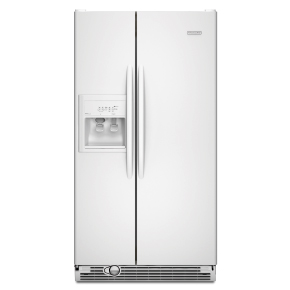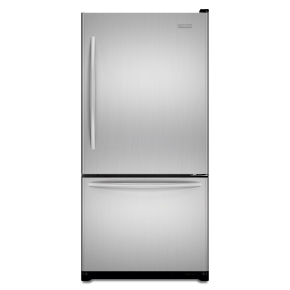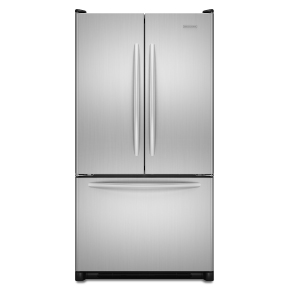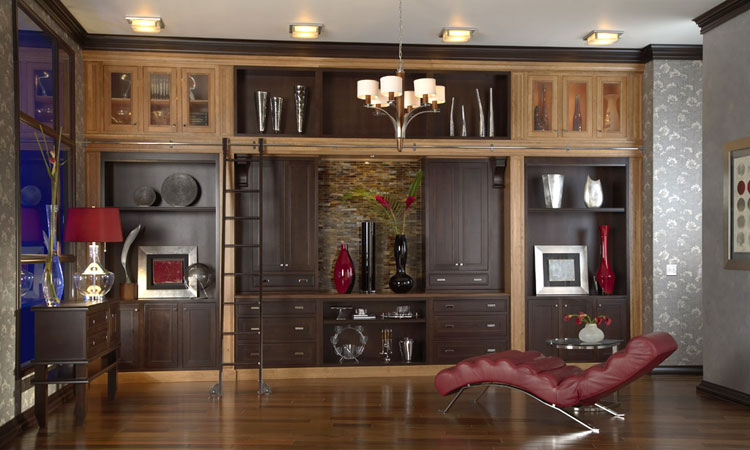A free-standing range has finished sides and functions independently from the counters and cabinetry to either side of it. The easiest way to identify one is that it always has a riser on the 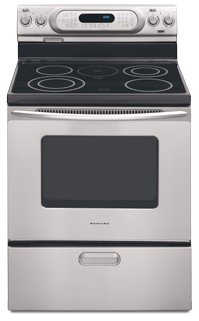 back of it, and the appliance's controls are located on that riser for the most part. Free-standing ranges are the traditional design of an American range, it's what most people grew up with and already own. There are gas and electric versions of every model sold by the major manufacturers and they stick to the free-standing and slide-in general styles.
back of it, and the appliance's controls are located on that riser for the most part. Free-standing ranges are the traditional design of an American range, it's what most people grew up with and already own. There are gas and electric versions of every model sold by the major manufacturers and they stick to the free-standing and slide-in general styles.
The primary benefit to them is that they cost less than their more contemporary brethren, the slide-in ranges. The downside to them is that they have a riser on the back of them. If you're renovating a kitchen and you want to feature an interesting mosaic backsplash behind your range, a free-standing range shoots you in the foot because it covers such a large part of that space. The cooktop on a free standing range sits at or just above the counter tops to either side of it and they leave a gap between the appliance and the counter.
So far as I know, all electric models sold in the US these days have a ceramic cooktop. The old "eyeball" burners have all but disappeared. As an aside, those cooktops everyone refers to as glass as a ceramic product called Ceran and Ceran is made by one company in the world. Never let someone try to tell you that brand A has a better quality cooktop than brand B because both brands bought their Ceran from the same place.
The newer alternative to a free-standing range is called a slide-in range. A slide-in appears to be smaller than a free-standing range when you see them side by side. To an extent that is correct. However, the oven compartments in both appliances are the same size, the cooktops hold the same number of burners and with no riser the control knobs get shifted to the face of the 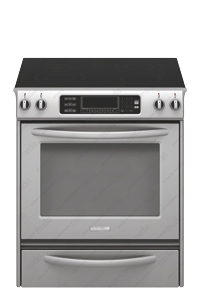 appliance. So far as function is concerned, both appliances are the same size.
appliance. So far as function is concerned, both appliances are the same size.
A slide-in doesn't have finished sides and is designed to "slide in" to a gap in the cabinetry and counters. The height of the appliance keeps the cooktop at the same level as the counters and there is no gap between the cooktop and the counter. This makes for a neater appliance. The counter extends underneath the cooktop itself by around a half an inch on both side and on the back. This means that the appliance is not the full depth of the counter and that counter top material extends behind the cooktop.
As a practical matter, replacing a free-standing range with a slide-in in an existing kitchen set up will require that you get new counters at the same time. Fitting one of these things can be tricky, even in a new kitchen. They have zero tolerances for the variation in counter heights. The old rule of thumb in kitchen design was that the top of a kitchen counter stood 36" above the floor. Back in the day, this was a nominal dimension. All homes have uneven floors and there was always some flexibility regarding that 36" height rule. Not since the dawn of the slide-in though. They HAVE to be at least 36" off the floor or they don't fit. Talk about a heartbreak. Imagine spending $40,000 on a kitchen renovation and on the last day, when the appliances are going in you find out that your $2000 slide-in range doesn't fit and that you can't fix it. Oy, that's the stuff that keeps me awake at night.
Every consumer-grade manufacturer out there that I know of makes four versions of the same range: free-standing electric, slide-in electric, free-standing gas and slide-in gas. Most differences between slide-in and free-standing ranges are aesthetic. Free-standing ranges look better because they appear to be smaller, they don't dominate the back splash area and they are more contemporary.
Just as you have to select a refrigerator, so to you'll have to pick a range. If it's up to me, you'd get a bottom-mount, single-door, 36" refrigerator and now a slide-in range. Next up is dishwashers and microwave ovens. Woo-hoo!
Again, both of the appliances shown above are from KitchenAid http://www.kitchenaid.com/
